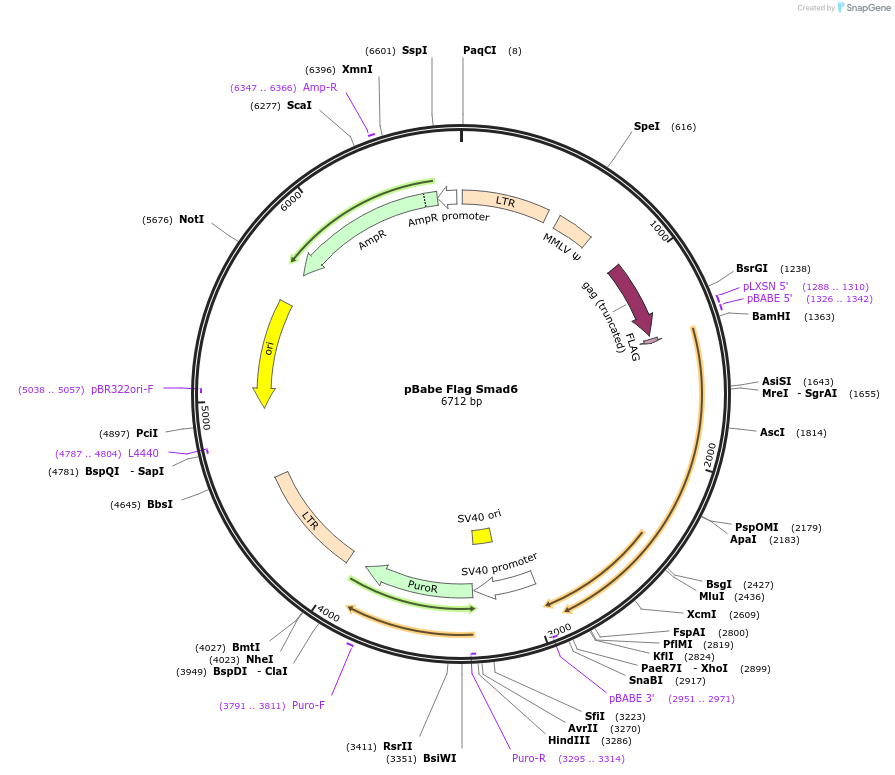-
Depositing Lab
-
Publication
-
Sequence Information
Ordering
| Item | Catalog # | Description | Quantity | Price (USD) | |
|---|---|---|---|---|---|
| Plasmid | 14835 | Standard format: Plasmid sent in bacteria as agar stab | 1 | $89 | |
Backbone
-
Vector backbonepBabe puro 3
- Backbone size w/o insert (bp) 5100
-
Vector typeMammalian Expression, Retroviral
-
Selectable markersPuromycin
Growth in Bacteria
-
Bacterial Resistance(s)Ampicillin, 100 μg/mL
-
Growth Temperature37°C
-
Growth Strain(s)DH5alpha
-
Copy numberHigh Copy
Gene/Insert
-
Gene/Insert nameSmad6
-
SpeciesM. musculus (mouse)
-
Insert Size (bp)1500
-
Entrez GeneSmad6 (a.k.a. Madh6, b2b390Clo)
-
Tag
/ Fusion Protein
- Flag (N terminal on insert)
Cloning Information
- Cloning method Restriction Enzyme
- 5′ cloning site BamHI (not destroyed)
- 3′ cloning site XhoI (not destroyed)
- 5′ sequencing primer pBabe 5'
- (Common Sequencing Primers)
Resource Information
-
A portion of this plasmid was derived from a plasmid made byMasao Takase, K. Miyazono lab, Dept of Biochemistry, Cancer Institute, Tokyo, Japan
-
Articles Citing this Plasmid
Terms and Licenses
-
Academic/Nonprofit Terms
-
Industry Terms
- Not Available to Industry
Trademarks:
- Zeocin® is an InvivoGen trademark.
Depositor Comments
See Author's map for more information.
These plasmids were created by your colleagues. Please acknowledge the Principal Investigator, cite the article in which the plasmids were described, and include Addgene in the Materials and Methods of your future publications.
-
For your Materials & Methods section:
pBabe Flag Smad6 was a gift from Rik Derynck (Addgene plasmid # 14835) -
For your References section:
Roles of autocrine TGF-beta receptor and Smad signaling in adipocyte differentiation. Choy L, Skillington J, Derynck R. J Cell Biol. 2000 May 1. 149(3):667-82. 10.1083/jcb.149.3.667 PubMed 10791980







